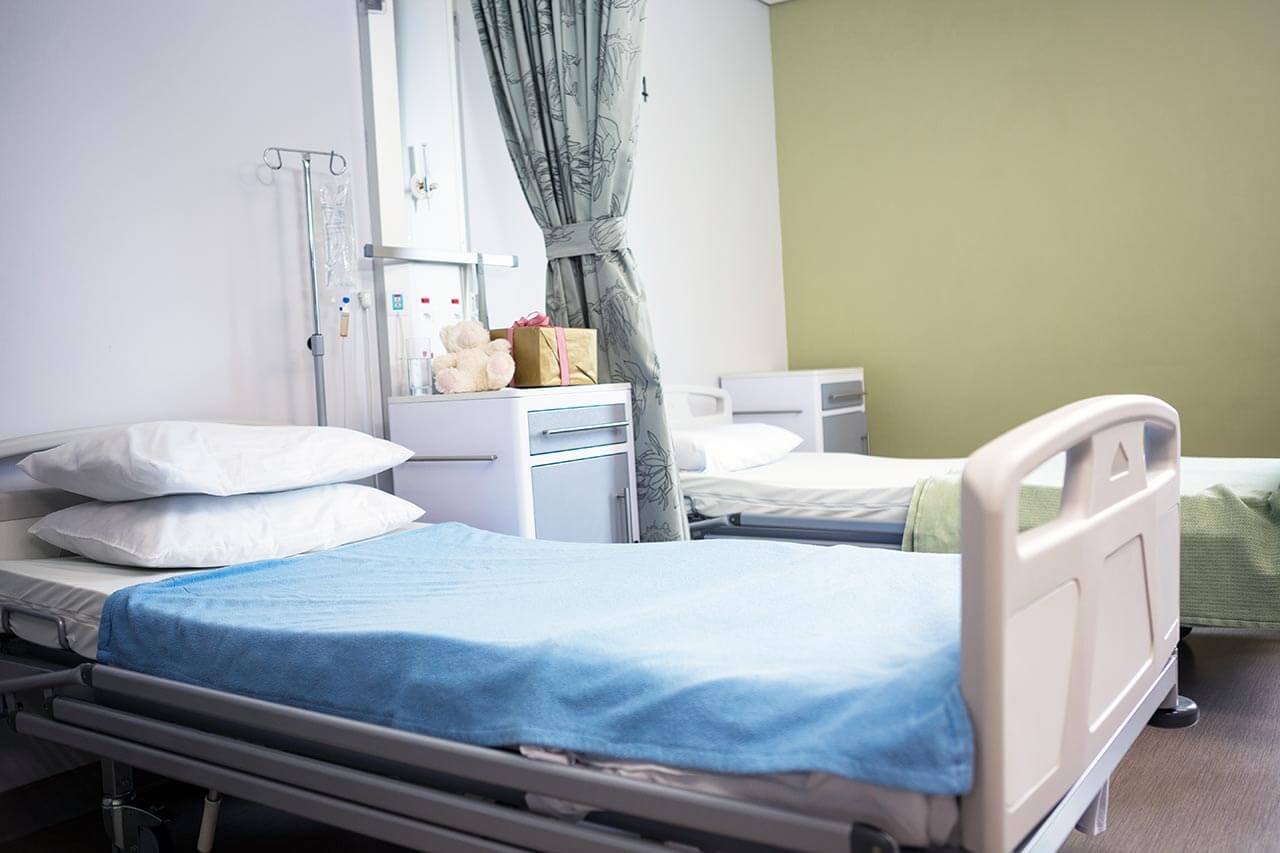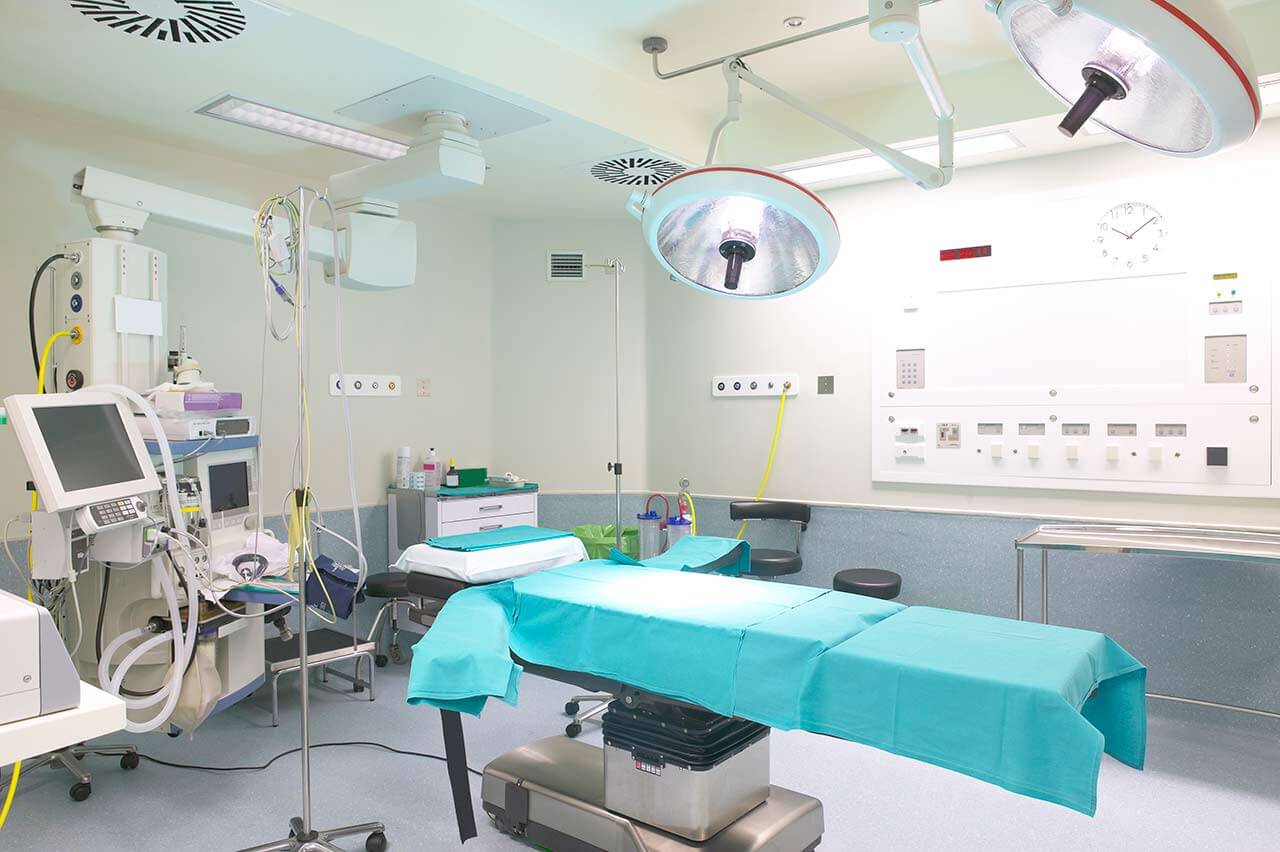
The program includes:
- Initial presentation in the clinic
- case history collection
- general clinical examination
- laboratory tests:
- complete blood count
- general urine analysis
- biochemical analysis of blood
- TSH-basal
- tumor markers
- indicators of inflammation
- indicators of blood coagulation
- abdominal ultrasound scan
- CT / MRI of chest and abdomen
- 1 course of chemotherapy
- consultations of related specialists
- symptomatic and specific treatment
- the cost of essential medicines and materials
- nursing services
- control examinations
- full hospital accommodation
- developing further treatment plan
How program is carried out
During the first visit, the doctor will conduct a clinical examination and go through the results of previous laboratory tests and instrumental examinations. After that, you will undergo an additional examination, including laboratory assessment of liver and kidney function, ultrasound scan. Based on the received results, the doctor will elaborate the chemotherapy regimen. If necessary, related medical specialists will be involved in the elaboration of a treatment regimen (tumor board).
Chemotherapy is carried out as the inpatient procedure, with mandatory admission to the hospital. After the placement of a venous catheter, you will stay in a comfortable ward. An infusion system will be connected to the catheter, through which the required drug or a drug combination will be administered. All drugs are administered by intravenous drip, slowly, so the total duration of the infusion can be up to several hours. All this time, doctors and nurses will monitor your health condition closely.
After the course of chemotherapy, you will stay under medical supervision in the ward for a few more hours. After the completion of the chemotherapy course and control examinations you will receive the medical report with detailed recommendations regarding further treatment. In the future, you will be able to have a distant consultation with your attending physician and schedule the next course of chemotherapy, if necessary.
Required documents
- Medical records
- MRI/CT scan (not older than 3 months)
- Biopsy results (if available)
Service
You may also book:
 BookingHealth Price from:
BookingHealth Price from:
About the department
The Department of Pediatric Oncology and Hematology at the Children's Hospital Nuremberg provides the full range of medical services in the areas of its specialization. The department's doctors diagnose and treat solid malignant tumors and benign and malignant pathologies of the hematopoietic system. Pediatric oncologists and hematologists focus on young patients with gliomas, glioblastomas, medulloblastomas, Ewing's sarcomas, osteosarcomas, retinoblastomas, leukemias, and lymphomas. The department's medical team admits children and adolescents up to the age of 18. Many diagnostic and therapeutic procedures are performed on an outpatient basis, making the treatment process easier for the child. The medical care in the department meets the requirements of the Society for Pediatric Oncology and Hematology (GPOH). A treatment regimen for each child is developed during an interdisciplinary tumor board, and the doctors strive to prescribe the most effective and sparing therapy. The most commonly used treatment method in the department is chemotherapy. Surgical interventions for the resection of solid malignant tumors are performed by highly specialized pediatric surgeons. Children and their parents receive psychological support throughout the entire treatment process. The Head Physician of the department is Dr. med. Jörg Leyh.
The most common cancer in the clinical practice of the department's doctors is leukemia. The specialists have vast experience in the treatment of all types of blood cancers in children, such as acute lymphoblastic leukemia, acute myeloid leukemia, chronic myeloid leukemia, and myelodysplastic syndromes. The main warning signs that may indicate the development of the disease in a child are fever, weakness, increased fatigue, easily occurring bleeding and hematomas, and pain in the bones and joints. In the initial stage of diagnostics, doctors carry out a clinical examination, study the patient's medical history, and perform a complete blood count. If the results of the preliminary diagnostics are unsatisfactory, the child is also prescribed a bone marrow puncture or biopsy. In some cases, instrumental tests may also be required, including ultrasound of the salivary glands, lymph nodes, liver, and spleen, chest X-ray, and CT and/or MRI. The first-line treatment for leukemia is chemotherapy. The course of chemotherapy is often supplemented with immunotherapy. A bone marrow transplant may be the best treatment option for children with advanced stages and aggressive forms of leukemia. This procedure is performed in cooperation with partner clinics.
The department also successfully treats children with the following brain malignancies: gliomas, medulloblastomas, ependymomas, craniopharyngiomas, and rhabdoid tumors. Brain tumors in children are the second most common type of cancer after leukemia. Brain cancer in its early stages progresses slowly and is asymptomatic, so it is difficult to suspect cancer in a child. When the tumor reaches a large size, the child experiences severe symptoms, including headaches, nausea, vomiting, vision problems, coordination problems, increased fatigue, hormonal imbalances, unexplained weight loss or gain, etc. The child with a suspected malignant tumor undergoes thorough diagnostics, during which doctors carry out a general clinical examination, study the medical history of the young patient, and perform a comprehensive neurological examination to assess brain functions (vision, hearing, balance, coordination, and reflexes). The specialists also conduct imaging tests, such as CT and/or MRI, which allow them to accurately determine the location and size of the brain tumor. The final stage of the diagnostics is a biopsy, and if necessary, a lumbar puncture may also be performed. With all the diagnostic data available, oncologists, together with pediatric surgeons, begin to elaborate a treatment regimen. The treatment of brain cancer is usually based on the surgical resection of the neoplasm. However, surgery is most often not sufficient to completely suppress the oncological process in the brain, so the treatment regimen additionally includes chemotherapy, radiation therapy, or targeted therapy. After the basic course of treatment, the child undergoes rehabilitation aimed at restoring vision, speech, hearing, and motor function. Experienced psychologists work with the young patients and their parents during the treatment. The specialists use modern approaches to eliminate stress and depressive states and set up a child for a favorable treatment outcome.
The department's specialists have vast experience in the treatment of Ewing's sarcoma, a malignant bone tumor in children. The tumor is most often localized in the lower and upper limbs or pelvis. The main manifestations of Ewing's sarcoma include swelling and pain in the tumor area, fever, lameness, spontaneous bone fractures, and severe bone pain, especially during physical activity and at night. To confirm Ewing's sarcoma, the department's doctors carry out a complete blood count, a lactate dehydrogenase test, a bone X-ray scan, a chest CT scan (the tumor can spread to the lungs), magnetic resonance imaging, bone scintigraphy, and a biopsy. Based on the diagnostic results, the department's oncologists make an accurate diagnosis and determine whether Ewing's sarcoma is localized (the tumor is located only in one part of the body) or metastatic (cancer has spread to the lungs, bone marrow, or other bone structures). Fortunately, in most cases, the specialists diagnose the localized type of Ewing's sarcoma, which significantly increases the chances of a complete cancer cure. In most cases, treatment begins with a course of chemotherapy to shrink the size of the tumor, after which surgeons perform a surgical intervention. In some situations, local tumor irradiation may be used instead of surgery.
The department's key clinical focuses include:
- Diagnostics and treatment of leukemia
- Acute lymphoblastic leukemia
- Acute myeloid leukemia
- Chronic myeloid leukemia
- Myelodysplastic syndrome
- Diagnostics and treatment of brain tumors
- Gliomas
- Medulloblastomas
- Ependymomas
- Craniopharyngiomas
- Rhabdoid tumors
- Diagnostics and treatment of lymphomas
- Hodgkin lymphoma
- Non-Hodgkin lymphoma
- Diagnostics and treatment of Ewing's sarcoma
- Diagnostics and treatment of osteosarcoma
- Diagnostics and treatment of neuroblastoma
- Diagnostics and treatment of liver cancer
- Diagnostics and treatment of retinoblastoma
- Diagnostics and treatment of germ cell tumors
- Diagnostics and treatment of other malignant tumors
- Pancreatic cancer
- Thyroid cancer
- Throat cancer
- Laryngeal cancer
- Nasopharyngeal cancer
- Diagnostics and treatment of other diseases in children
Photo of the doctor: (с) depositphotos
About hospital
The Children's Hospital Nuremberg is a maximum care health facility that focuses on providing effective care for young patients in a pleasant and comfortable environment. The hospital admits children and adolescents up to 18 years old. Medical care can be provided on an inpatient or outpatient basis. Highly qualified doctors and experienced nursing staff work with children. The specialists get along well with young patients. The goal of the hospital's medical team is to provide patients with modern and most sparing treatment. It is also important for doctors to eliminate pain and discomfort during the therapeutic process. The key to successful clinical practice in the medical facility is the close cooperation of doctors, their high competence and vast experience, as well as the hospital's state-of-the-art medical equipment and modern infrastructure.
The hospital has more than ten specialized departments. Priority areas include pediatric otolaryngology, surgery, urology, orthopedics, endocrinology, oncology, hematology, pulmonology, and neuropediatrics. Patients are offered innovative treatments that have proven themselves at the international level. Surgical treatment involves the wide use of sparing, minimally invasive techniques, after which children recover quickly and experience virtually no pain.
The hospital admits more than 15,000 young patients every year, most of whom are treated on an outpatient basis without mandatory hospitalization. Each child receives personalized care. The treatment is accurately planned, and the doctor tells the parents about its specifics. An important aspect is a friendly and attentive attitude towards children, as well as understanding their fears and needs.
The Children's Hospital Nuremberg has repeatedly received the "Ausgezeichnet. FÜR KINDER" quality certificate. This certification is granted to the best children's hospitals in Germany, which regularly demonstrate high treatment success rates.
Photo: (с) depositphotos
Accommodation in hospital
Patients rooms
The patients of the Children's Hospital Nuremberg live in comfortable rooms designed in a child-friendly style. The furnishing of a patient room includes a comfortable automatically adjustable bed, a bedside table, a table, chairs, and a wardrobe. The hospital has a Rooming-in system, thanks to which parents can stay in the same room with their child. To ensure interesting and pleasant leisure time for children, the hospital has excellent playrooms, where every child can find something to do and toys to their liking.
Meals and Menus
The patients at the hospital are offered three tasty and balanced meals a day: breakfast, lunch, and dinner. With appropriate clinical indications, an individual menu may be developed for the child.
Further details
Standard rooms include:




